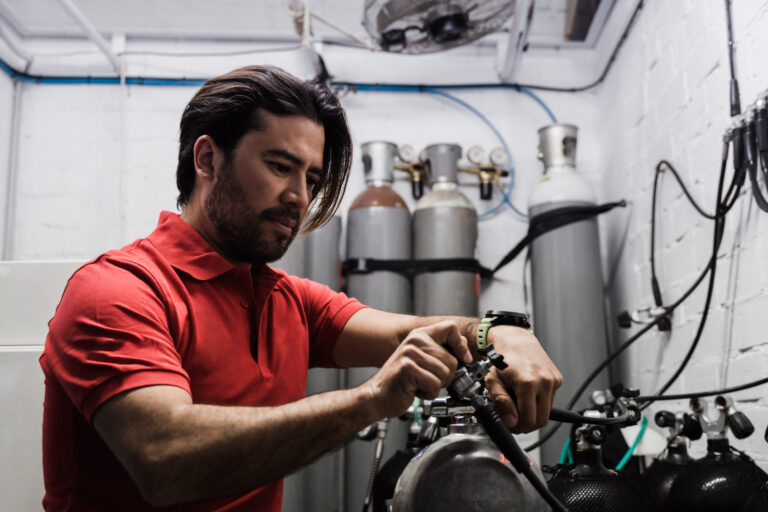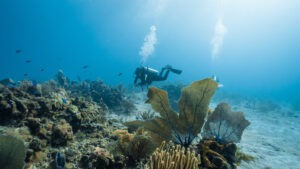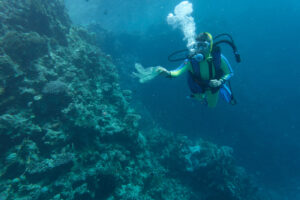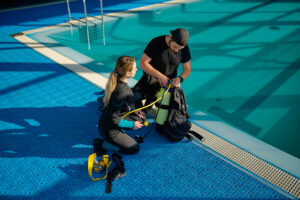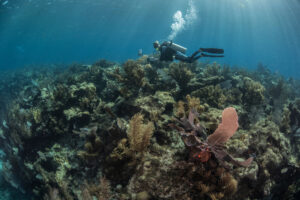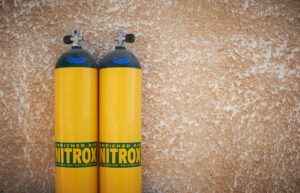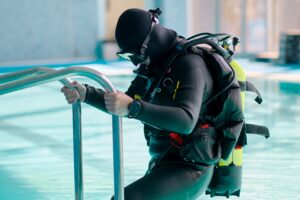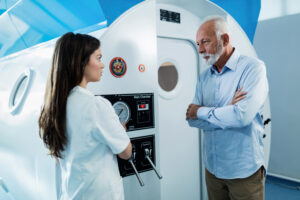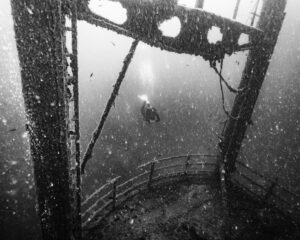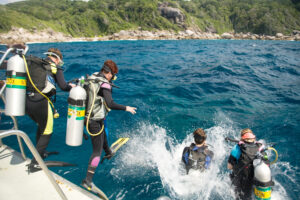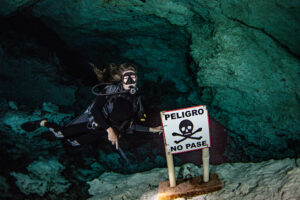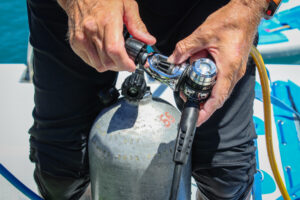What is Air when Scuba Diving?
Air, a mixture of gases consisting of approximately 21% oxygen, 78% nitrogen, and 1% other gases (mainly argon), is an essential component for scuba diving. Compressed air is stored in a tank, providing a breathable source of oxygen for divers. This article delves into the importance of air in scuba diving, the history of air usage, its composition, and its effects on the human body at various depths.
History of Air Usage in Scuba Diving
The concept of using compressed air for diving dates back to the early 19th century when inventors like Augustus Siebe and Charles Condert designed diving helmets and pumps to supply air to submerged divers. In the 1940s, Emile Gagnan and Jacques-Yves Cousteau revolutionized diving by inventing the Aqua-Lung, a demand regulator that allowed divers to breathe compressed air underwater at ambient pressure. The Aqua-Lung paved the way for modern scuba diving, making it accessible to a wider audience and facilitating underwater exploration.
Composition of Air in Scuba Diving
In scuba diving, air is usually taken from the atmosphere and compressed to fit into a tank. The primary components of air are:
Oxygen (O2)
Approximately 21% of the air mixture, oxygen is vital for human respiration and energy production. It plays a critical role in metabolism and helps in the elimination of carbon dioxide (CO2) from the body.
Nitrogen (N2)
Constituting about 78% of the air, nitrogen is an inert gas under normal conditions. However, under high pressure, it can have physiological effects on divers, such as nitrogen narcosis.
Other Gases
The remaining 1% consists of various trace gases, primarily argon, but also includes carbon dioxide, neon, helium, methane, and other noble gases.
The Importance of Air in Scuba Diving
Air is crucial in scuba diving for the following reasons:
Respiration
Compressed air provides the oxygen necessary for divers to breathe underwater. The regulator, connected to the air tank, reduces the high pressure of the tank’s air to the ambient pressure, allowing divers to inhale and exhale comfortably.
Buoyancy Control
Air is used to inflate and deflate the buoyancy compensator device (BCD), which helps divers maintain neutral buoyancy and control their ascent and descent.
Equalization
Divers must equalize the pressure in their ears, mask, and other air spaces as they descend and ascend. They achieve this by adding or releasing air from these spaces.
Effects of Air at Depth
As divers descend, the pressure increases, impacting the gases in their tanks and bodies:
Increased Oxygen Partial Pressure
The increased pressure affects the partial pressure of oxygen (PPO2), which can become toxic at high levels. Oxygen toxicity, characterized by symptoms like dizziness, nausea, and convulsions, can occur in deep dives if PPO2 exceeds safe limits.
Nitrogen Narcosis
The increase in nitrogen partial pressure at depth can cause a narcotic effect, known as nitrogen narcosis or “rapture of the deep.” This temporary, reversible condition impairs a diver’s cognitive abilities, reaction time, and decision-making.
Decompression Sickness
If a diver ascends too quickly, nitrogen absorbed into their tissues at depth can form bubbles, causing decompression sickness (DCS), also known as “the bends.” Symptoms of DCS can range from mild joint pain to life-threatening neurological issues.
Alternatives to Air in Scuba Diving
Enriched Air Nitrox (EAN)
A popular alternative to compressed air is Enriched Air Nitrox (EAN), which contains a higher percentage of oxygen (22-40%) and a lower percentage of nitrogen. This mixture reduces the risk of nitrogen narcosis and allows for longer bottom times, as well as shorter surface intervals between dives.
Trimix
For deep technical diving, Trimix is used as a breathing gas. Trimix combines oxygen, nitrogen, and helium to reduce the risks associated with high oxygen and nitrogen partial pressures. The helium component minimizes nitrogen narcosis and oxygen toxicity, making it suitable for deep dives and decompression dives.
Heliox
A mixture of helium and oxygen, Heliox is used in commercial and technical diving to eliminate nitrogen narcosis and reduce the work of breathing at depth. However, its high cost and the increased thermal conductivity of helium (leading to faster heat loss) limit its widespread use in recreational diving.
Air Quality in Scuba Diving
The quality of the compressed air used for diving is of utmost importance. Contaminants like carbon monoxide, oil, and water can be hazardous to divers. Air compressors used for filling scuba tanks must be properly maintained, and filters must be changed regularly to ensure clean, breathable air.
Air quality standards for scuba diving, established by organizations like the Compressed Gas Association (CGA) and the European Norm (EN), specify the maximum allowable levels of various contaminants in compressed breathing air.
Air Consumption and Management
Effective air management is a critical skill for scuba divers. Divers must monitor their air supply throughout the dive and maintain adequate reserves for a safe ascent and any unforeseen circumstances. Factors affecting air consumption include depth, physical exertion, body size, buoyancy control, and individual breathing patterns. Several techniques can help divers conserve air and extend their bottom time:
Efficient finning techniques
Using proper finning techniques reduces physical exertion, leading to lower air consumption.
Streamlining
Maintaining a horizontal body position and securing equipment close to the body reduce drag, which conserves energy and air.
Relaxation and breath control
Staying relaxed and practicing slow, deep breathing can help conserve air and reduce anxiety.
Air is a fundamental aspect of scuba diving, allowing divers to explore the underwater world safely and comfortably. Understanding the composition, properties, and effects of air at depth is essential for divers to manage their air consumption, avoid potential hazards, and make informed decisions about alternative breathing gases. By ensuring high-quality air and developing effective air management techniques, divers can optimize their diving experience and reduce risks associated with compressed air usage.

